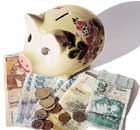Asia-Pacific
New York Times to ask Web readers to pay up in '11
(Agencies)
Updated: 2010-01-21 09:27
 |
Large Medium Small |
NEW YORK: The New York Times plans to charge readers for full access to its Web site next year, reviving an idea that fizzled twice for the newspaper. This time it's betting that it will be able to wring more revenue from readers without crimping its Internet ad sales.
Under the plan outlined Wednesday, the Times will adopt a "metered" system that will allow readers to click on a certain number of stories for free each month before fees kick in. A metered system is designed to draw casual readers with free articles while getting fees from people who want to dig deeper on the site.
The fees won't be imposed until next year, giving Times executives more time to build the system and figure out the details that are likely to dictate whether the gamble pays off. The pivotal issues include determining how much to charge and how many stories will be free each month.
The only certainty for now is that subscribers to the printed version of the Times will still get unlimited free access to the Web site. That could help the Times sell more subscriptions to the printed newspaper among a portion of Internet readers who figure they may as well get the newspaper delivered to their home or office, too, as long as they have to pay to read everything online.
| ||||
The metered approach has worked well for The Financial Times, a more specialized newspaper that caters to an upscale audience interested primarily in news about the stock market, the economy and businesses.
Some newspaper analysts and executives have questioned whether Internet fees make as much sense for more mainstream newspapers such as the Times, whose stories span many of the political, business, sports and cultural topics that are covered by other news outlets that don't charge for Web access.
That raises the chances that hordes of fee-averse readers will flock to free news sites, a scenario that could also drive away Internet advertisers interested in reaching the biggest possible audience. Any downturn in Internet advertising - one of newspapers' few areas of growth in recent years - could more than offset any benefit from reader fees.
The Internet currently generates between 10 percent and 15 percent of newspaper ad sales now, and the figure is expected to rise as more marketing budgets shift from print to the Web.
The Times could face an especially painful backlash because it has one of the largest newspaper followings on the Web, with 12.4 million visitors last month, according to the research firm comScore Inc. By comparison, The Washington Post's Web site attracted 9.2 million and USA Today drew 8.6 million.
Reflecting the stakes riding on its decision, the Times spent more than six months assessing the logic of charging for its Web site.
More newspaper publishers are likely to take the leap too, now that one of the world's best known newspapers has taken the plunge, said Greg Harmon, chief executive of Belden Interactive, which consults with publishers about Internet fees.
"This is like the industry is being given the permission to charge, almost like in a papal sense," Harmon said.
About 150 US newspapers already have imposed Internet subscriptions, with fees ranging from as little as $1 per month to as much as $35 per month, based on a recent study conducted by ITZ/Belden Interactive.
The most successful so far has been The Wall Street Journal, which had an average of 407,000 electronic subscribers during the six-month period that ended September 30. The Journal's Web site on Wednesday was offering online-only subscriptions at about $8 per month and print-only subscriptions at about $9 per month.
With a long history of award-winning reporting and commentary, the Times should be able to lure a substantial number of Internet subscribers, said newspaper analyst Mike Simonton of Fitch Ratings.
"It's a very unique franchise and it has a very loyal readership," he said.
The Times has a paid weekday circulation of about 928,000. Newspapers charging Internet fees so far have been able to get the equivalent of 2.4 percent of their print circulation to subscribe on the Web, based on ITZ/Belden Interactive's study of the 25 general-interest publications that have gained the most traction with oncription for $299 comes with extra material. Or for $397 a year, FT subscribers can get the printed newspaper and read the Web site.
The newspaper has roughly 121,000 people who subscribe exclusively to its digital edition, up 22 percent from a year ago, according to Rob Grimshaw, managing director of FT.com. By comparison, the printed newspaper has about 400,000 subscribers.
He did not disclose specific figures on ad revenue, but he said the newspaper makes up for the loss of advertising volume by charging each advertiser more. It can get this premium, he said, because FT.com knows more than other online destinations about its users and their interests.










